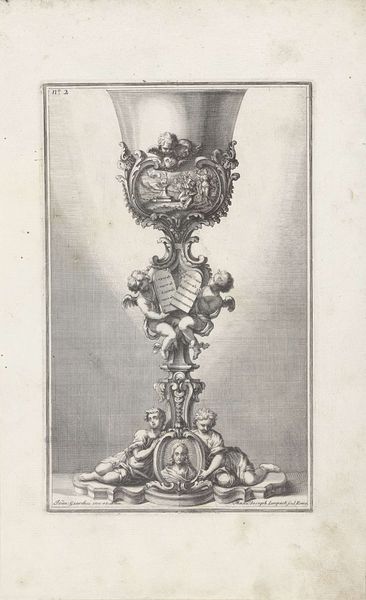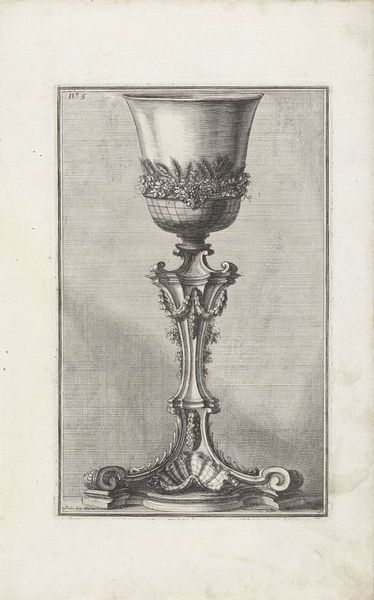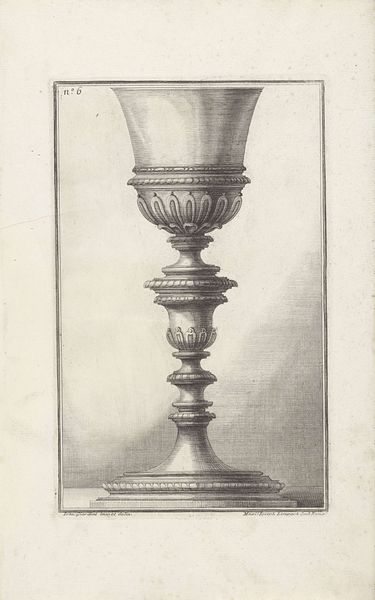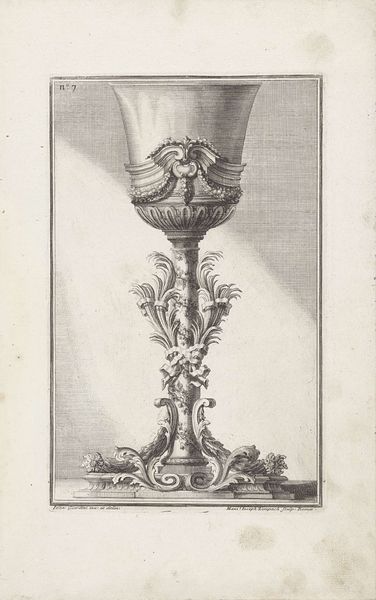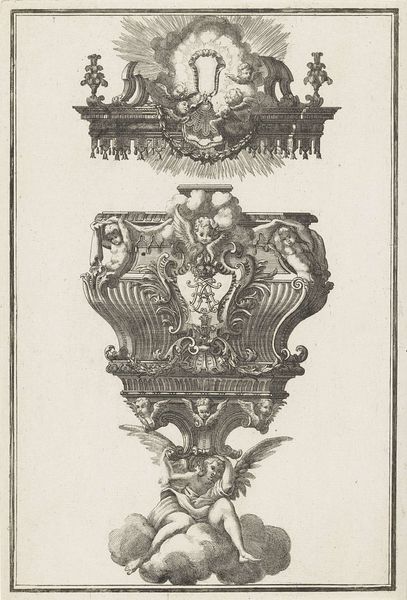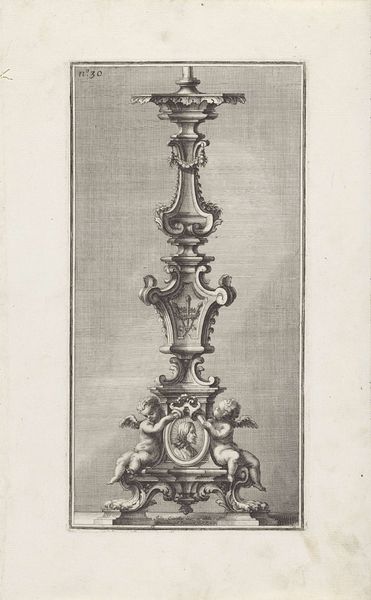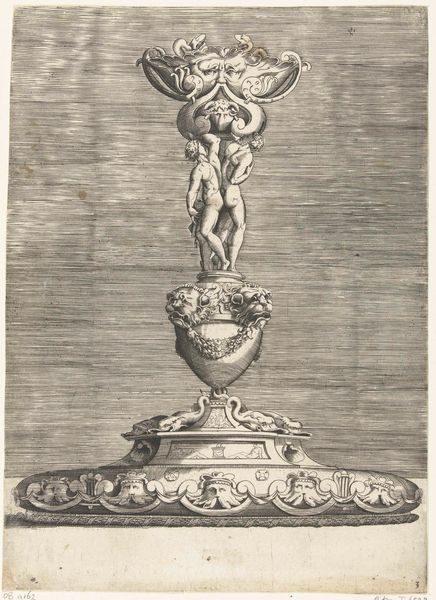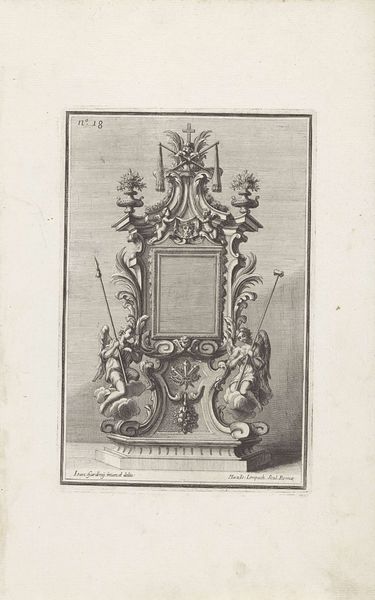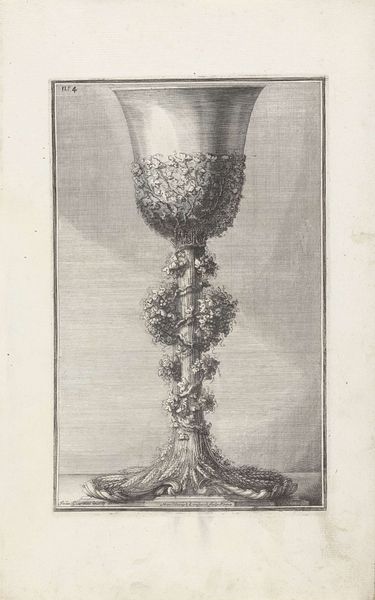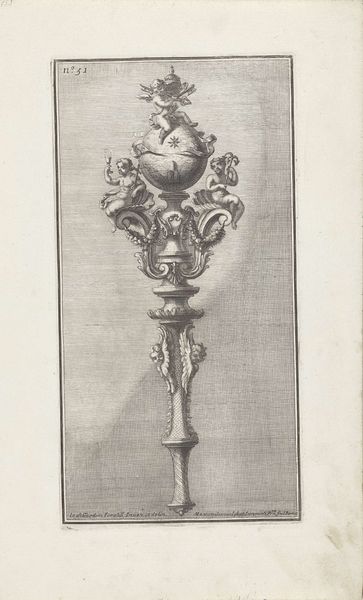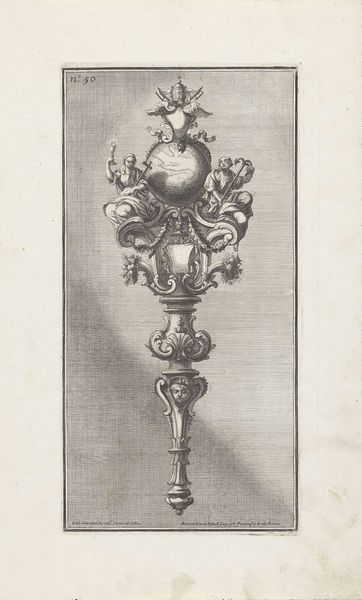
Kelk met offerscène, putti, portret van Christus en twee engelen 1714
0:00
0:00
engraving
#
baroque
#
history-painting
#
engraving
Dimensions: height 274 mm, width 171 mm
Copyright: Rijks Museum: Open Domain
Editor: This engraving by Maximilian Joseph Limpach, titled "Chalice with Offering Scene, Putti, Portrait of Christ and Two Angels" from 1714, showcases an elaborate chalice. The intricacy of the design is just amazing. What catches your eye when you look at this piece? Curator: What immediately strikes me is the meticulous rendering of texture and form. Limpach demonstrates a keen understanding of how light interacts with the chalice’s metallic surface. Observe how he employs varied hatching techniques to describe the curvature and volume, transforming a flat plane into a three-dimensional illusion. Do you notice how the contrast of light and shadow gives the image its Baroque extravagance? Editor: Yes, the shading really makes the figures pop. It's almost sculptural. How do you read the various decorative elements – the angels, the putti, and the offering scene itself? Do they contribute to the overall composition in a significant way? Curator: Absolutely. They serve as focal points within a visual hierarchy, guiding the viewer's eye across the surface. The circular composition around the portrait of Christ, flanked by putti, contrasts beautifully with the linear, almost architectural base. This contrast adds depth and reinforces the object’s sacred function through formal means, independent of its iconographic significance. Note that the proportional relationships between elements contribute to the success of the print, irrespective of any external meaning we may give it. Editor: So, it's not just about what's depicted but how it's depicted, and how the visual elements relate to one another. It makes me appreciate the engraver's skill in bringing a design like this to life. Curator: Precisely. And considering that engraving is an exacting process, it underscores the value placed on craftsmanship and visual articulation during this period. I see the mastery with which formal challenges are addressed in a print like this one, and I think about how well Limpach met those challenges in 1714.
Comments
No comments
Be the first to comment and join the conversation on the ultimate creative platform.
